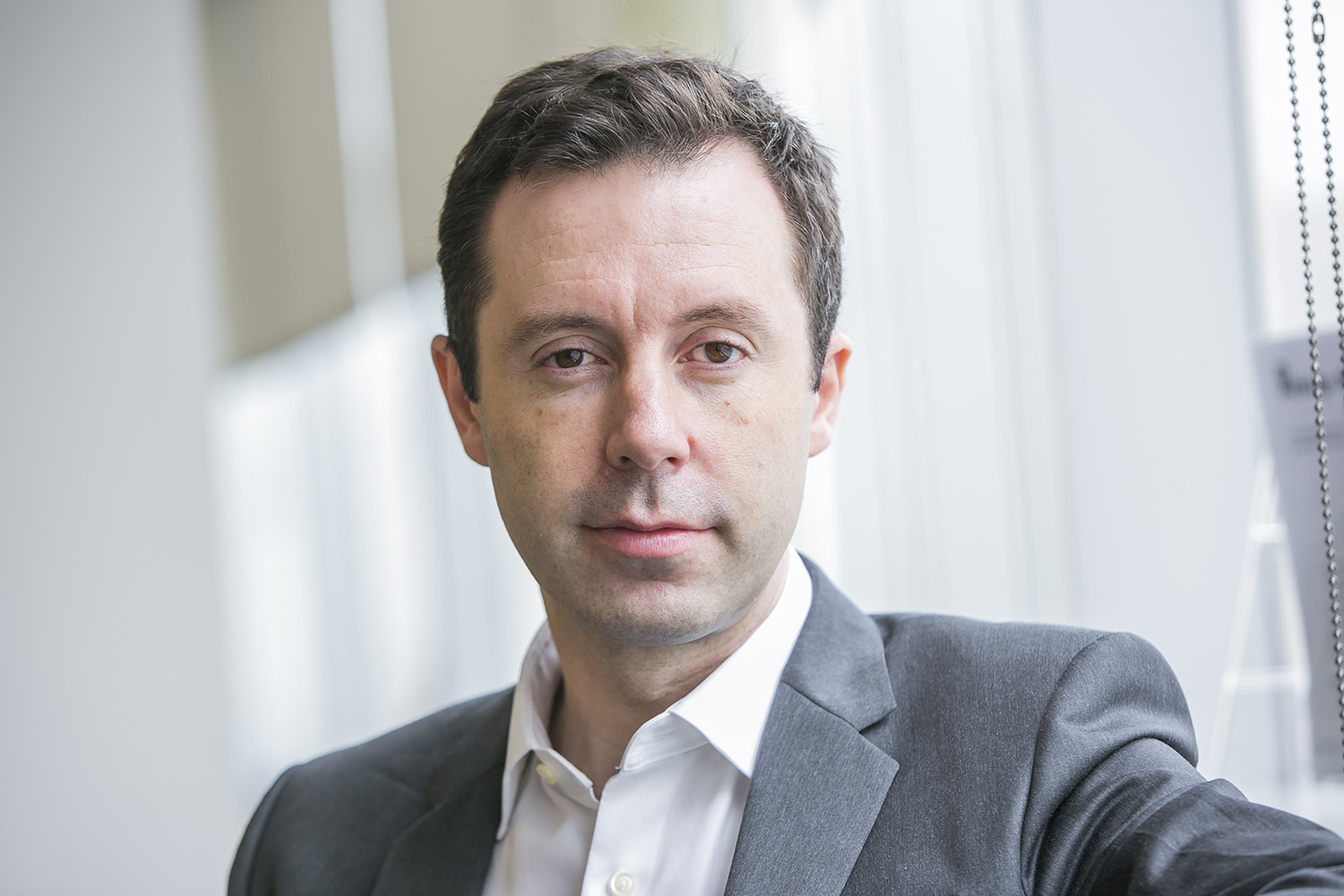
Getty Images
How Healthcare is Leveraging Real-World Data to Improve Outcomes
To improve outcomes during the COVID-19 pandemic and beyond, organizations are using real-world data for efficient and effective decision-making.
When describing the state of healthcare in the last few months, people have used certain words over and over again.
Unprecedented, crisis, rapid, and novel have become staple terms in the nation’s vocabulary, highlighting both the anomalous nature of the COVID-19 pandemic and the need for quick, innovative solutions.
At a time like this, researchers and leaders have to look beyond time-intensive, expensive randomized controlled trials. In order to find the answers to a question that is always evolving, the industry will need to examine information that is similarly ever-changing: Real-world data.
Defined by the FDA as data relating to patient health status or the delivery of healthcare routinely collected from a range of sources, real-world data is increasingly being used in clinical decision-making. Organizations are leveraging EHR data, patient registries, and mobile device information to better understand trends and outcomes, leading to improved care delivery.
During the current pandemic, this information has become all the more valuable. Real-world data can help inform leaders about anything from high-risk patient populations to the impact of measures like social distancing. It’s an invaluable resource, but like any data-related strategy in healthcare, it comes with several hurdles.
For starters, the breadth of this data can easily overwhelm entities without the tools or capacity to make sense of it. And even if they do have what they need to draw comprehensive conclusions from this information, quickly executing an efficient response is another task entirely.
As the pandemic surges on, the healthcare industry is continually developing new approaches to help reduce the spread and mitigate potential long-term effects of the virus – with real-world data playing a central role.
Through advanced analytics techniques, visualization tools, and other data-driven methods, organizations can begin to get the most out of real-world data sources, facilitating improved care now and in the future.
Gathering real-world information for real-world results
In order for healthcare institutions to successfully utilize real-world data, the information presented has to be accurate, timely, and actionable, according to Lisa Gulker, senior director of health system operations at Cerner.
“The overarching goal of real-world data is to give providers the best possible information so that they can consistently make great decisions for their patient populations,” she said.
“Organizations use this information to manage the resources that patients need, such as beds at a particular level of care, the right equipment, and the right staff to take care of patients.”
Such decisions are best informed by real-world data collected continuously and in real time. With real-time data, gathered from real-world sources, clinicians can gain a better sense of patient needs, as well as staffing and resources, to deliver optimal care.
However, making decisions based on information that is constantly changing is no easy feat, Gulker noted.
“When you’re used to working off of manual or retrospective data, it does take a lot of people and process transformation to respond to real-time data,” she said.

“At a leadership level, you’re using real-time data to make sure you generate value, protect patients, and efficiently and effectively move patients through the system. At the point of service level, you’re using this data to decide where to place patients in a health system and in what order. There are several chessboards you have to consider, and you have to have enough situational awareness of all of these different chessboards to make a great decision.”
To help organizations visualize operations in a centralized location, Cerner recently launched the Cerner Command Center dashboard, a platform powered by artificial intelligence and predictive analytics. The dashboard displays metrics like inpatient bed utilization, hospital admissions, and discharges in real time, allowing clinicians to make more informed care decisions.
Real-time and real-world data dashboards have been key to COVID-19 response efforts, but tools like these will continue to play a role in information delivery even after the pandemic has slowed down, Gulker added.
“As health systems have realized that they should expect some amount of COVID-19 in their environments for some amount of time, they’ve started to plan for operations that will include both COVID and non-COVID care,” she stated.
“A certain part of providers’ capacity will be devoted to COVID care, depending on their particular location and what's going on there. Then they’ll also need to make sure the non-COVID care capacity is functioning well and is safe for patients, too. Organizations are going to need both for at least a couple of years.”
In the academic sector, leaders are also working to help healthcare entities leverage real-world data to improve COVID-19 outcomes. The Center for Health Informatics (CHI) at the University of Illinois recently partnered with the World Health Organization/Pan-American Health Organization (WHO/PAHO) to form the Center for Health Informatics Mobilizing Experts in Illinois (CHIME in Illinois) initiative.
The project seeks to help public health agencies make data-based operational decisions during the pandemic by matching them with teams of students and CHI faculty.
“One of our major goals is to provide data science expertise and resources that health systems either don't have in-house or, more commonly, don't have enough of in-house to be able to deal with the surge caused by the pandemic,” said Ian Brooks, PhD, director of CHI.
“Then, on the educational side, we’re aiming to give our students experience working on those real-world projects, especially those projects where their skills can make a difference and help with the response.”
The initiative will gather data from several real-world sources, facilitating advanced analyses and enhanced decision support.
“We're drawing on a lot of different sources,” Brooks said.
“We have some projects looking at public data on social media – Twitter, Facebook, Reddit, YouTube, and other sources. We have data from official case counts. We’re getting data from the Google mobility numbers and the CDC mental health surveys. We also have data from WHO/PAHO on the state of health information systems throughout the Americas.”
At Weill Cornell Medicine’s Clinical and Translational Science Center (CTSC), researchers are also using real-world data from a number of sources to better understand COVID-19. Using a two-year, $1.5 million grant from NIH, the team will study the link between genetic variability, race and ethnicity, and severity of COVID-19.
“During the pandemic, we've been able to collect data from patients that we can use for clinical research in a completely de-identified way here at Cornell. There's a sense that this data can be really helpful in terms of understanding determinants of severity of disease,” said Olivier Elemento, PhD, director of the Englander Institute for Precision Medicine and professor of computational genomics in pathology and laboratory medicine at Weill Cornell.
Investigators will compare rates of hospitalization and deaths in affluent versus lower-income neighborhoods in New York City, as well as patterns in demographics, lab results, and biospecimens.
“We are now trying to use real-world data, like EHR information, to understand why the virus hits some patients harder than others,” Elemento explained.
“We’ll examine the data that's collected for routine clinical care, as well as additional data that we can get from patient samples. After we get the consent to do research on those samples, moving forward we could use them to predict who's at risk of progressing towards the more severe version of the disease.”
Trusting the data you have to get the answers you need
In healthcare, there is never a guarantee that all data will be accurate, up-to-date, and complete – in fact, as many in the industry are aware, that scenario is usually the exception.
“When you're teaching techniques and data science statistics in a classroom setting, typically you’ve designed the data set to be somewhat clean – you know what the data means, and you know what the answer's going to be. But outside the classroom, things are often not that simple,” Brooks said.
During a continually developing pandemic, these data issues are heightened significantly. Leaders need the most current information to make the best decisions, but the sheer amount of data generated every day makes that task easier said than done.
“With the COVID-19 projects we’re working on, there are lots of questions about interpretation of the data itself. Because the data is messy. If you go to several of the different sites that report cases, they have different numbers. It’s difficult to say which one is right, yet public health officials have to be making decisions on those data,” said Brooks.
“For example, there are questions about how effective social distancing measures are. Some of the best data we have for that comes from cell phone mobility, but not everybody has a cell phone, and not everybody has the mobility tracker turned on. You may have to find alternate ways of getting the data or the data that you really want just doesn't exist, and you have to find proxies for it.”

For provider organizations that have to make rapid care decisions every day, frequent communication with their IT developers may make it easier to trust the data they have available.
“In the last few months, we’ve learned a lot about how to treat COVID-19 and how it behaves, but at the very beginning we had no idea. When you're operating in that way, you need to at least be able to rely on data to show you what resources you have in order to respond,” said Gulker.
“We put a parallel client group into place so that we're constantly getting their feedback on whether this tool feels directionally correct in order to stay in step with their needs. Because organizations’ needs change so dramatically every few weeks, we want to make sure we stay current.”
On the research side, obtaining the right answers starts with observing the right patterns in the data that’s accessible.
“We’re very interested in testing the balance between biology and the social determinants of health in COVID-19. Nobody really knows what the balance is, but it's very clear that there is likely a social determinants of health component,” said Elemento.
“We believe that factors like people's occupations, the density of a population, and access to care impact someone’s exposure to the virus in the first place, as well as their outcomes. But before we deploy anything in the clinical arena, we have to demonstrate that there is a connection and clinical signal between these factors.”
Finding these connections will require researchers to consider a wide range of data points, both clinical and non-clinical, Elemento noted.
“We have to be able to develop multivariate models where we can correct for a variety of different features,” he said.
“For example, age is a very strong determinant of severity of disease, but this feature could be masking other features that are also connected. That's where it's important to have large sample types and multivariate models. It will enable us to extract the importance of each individual feature almost one at a time, but in the context of the other ones that are also available.”
Analyzing the present to get a jump on the future
When considering real-world data, one often thinks of whatever events are happening at that point in time. While this information does provide a holistic picture of the present, real-world data can also be useful in predicting events of the future.
“We’re starting to move that performance improvement or performance management paradigm into the world of real-time data, where we want to show organizations the patients who have leading indicators that certain events might happen,” said Gulker.
“When I can look at a patient population proactively to prevent infections or prevent falls, then I've really gotten into where we want to be as a leading health system. I can identify these patients and intervene before the event occurs, instead of responding to the event as it happens.”
Outside of the COVID-19 pandemic, provider organizations can leverage real-world data and analytics to get a better sense of what’s to come, and thus potentially avoid the worst.
“If we can use data science and machine learning to say these are the patients who are at risk for one of those events, then we can make sure that we are mitigating that risk to the best of our ability before it becomes an event. We’re aiming to develop a real-time and predictive method of managing patients’ journeys that hasn't been available before in the same robust way,” said Gulker.

The Weill Cornell team is working to achieve a similar goal. Researchers will develop predictive models to help shape COVID-19 detection and treatment, ultimately aiming to bring precision medicine to patients with the virus.
“We have some initial predictive models that seem to be pretty good at predicting who's at risk of being hospitalized after they get infected, or even who is at risk of potentially dying. We have some predictive models with AUCs somewhere between 0.8 and 0.9. When you reach that kind of predictivity, these are models that can be helpful on the clinical level,” said Elemento.
“The idea is to implement them in the clinical setting down the line and be able to prioritize patients based on the scores that come out of these models. If a patient is predicted to not do so well in the hospital, we can prioritize certain aspects of the patient's care – maybe give him higher doses of particular medications or monitor him more closely. These are the things that we want to do moving forward.”
With tools like these, the healthcare industry will begin to get closer to proactive, seamless care delivery, Gulker stated.
“It's about delivering real-time, predictive data to a health system at the point of service, giving providers everything they need to make a really great decision in the moment, and then enabling them to take action,” she said.
“If that happened in healthcare more, the operational system that surrounds clinical care wouldn’t impede a clinician’s ability to advance the patient's healthcare journey. Logistics shouldn't be a barrier to what the clinicians and patients are engaged in every day, whatever the health situation is. With real-time data, we can remove the friction in that decision- making.”
A new foundation of real-world data
COVID-19 has served as a catalyst for many recent innovations in healthcare, and the surge in use of real-world data is no exception.
For many leaders, the pandemic pushed them to execute plans they had in the works, triggering a new era of research and discovery.
“The CHIME in initiative is something that we have been working with WHO on for a couple of years. COVID-19 precipitated us getting the initiative together and launching it very quickly, but we intend to keep this going after the pandemic has subsided,” said Brooks.
“We’re working with health organizations on more longer-term projects, whether preparing to be able to respond to future COVID-19 outbreaks or looking at other health issues, including non-communicable diseases or other infectious diseases.”
Elemento has a similar vision for real-word data application.
“The silver lining in all this is that it's forced us to really speed up some of the things that we were planning to do before, but we had a timeline that wasn't as aggressive,” he said.
COVID-19 has brought the significance of real-world data collection to light, a lesson that will carry through to life after the pandemic.
“We found that when we were caring for patients with COVID-19, it was hard to conduct research and clinical care at the same time. It's important to be able to collect clinical data as much as possible, because then we can build predictive models and use them quickly, as opposed to waiting until we finalize these tools because we don't have enough data,” said Elemento.
“People are starting to realize that there's a lot of importance and power in real-world data and that we need to be better at collecting this information, potentially on short notice.”


